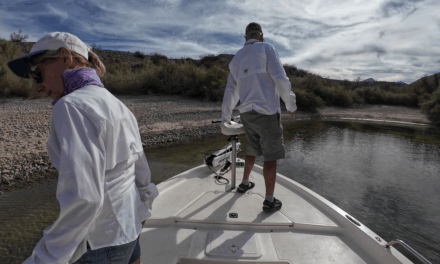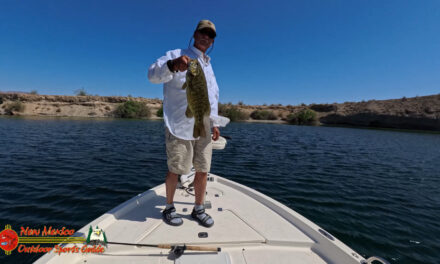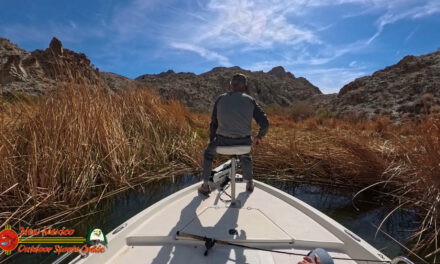Post spawn generally causes anglers to question their ability in locating and catching bass. Many anglers are presently facing the inevitable question: Where are the bass hiding? Rest assured the bass are there, close to their spawning flat, traveling the route they utilized to enter areas for nesting. Post spawn is characterized by bass moving back to areas they call home. During this time of rest and recuperation, bass show a tendency towards lethargy and inactivity, which generally lasts about 2 weeks. Post spawn may
deal anglers a low blow in catching numbers of bass, but remember, it won’t last long, and the bass will still bite.
On any given lake, not all bass are doing the same thing at the same time. Given this premise that bass have individual biological time clocks, will help ease the blues while fishing for post spawn bass. Starting in the upper end of lakes, bass will begin the first wave of their spawn on the northwest sides of the lake and coves. Like a giant wave, the spawn will creep slowly down the lake to the lower end over a period of several weeks to a couple of months. The water temperature must be conducive to eggs warming enough to hatch, and with that knowledge the upper ends will warm the quickest, while the lower end will be the last area to warm enough for a spawn to take place. As well, most female bass will not lay all their eggs in one nest with one male partner. Fear that their eggs will be destroyed, females will wave in and out of nesting areas, mating with different males over several weeks. Therefore, an area may have prespawn, spawn, and post spawn going on at the same time. Females stage and recuperate in the same areas, which are most apt to be secondary points right off of a creek channel that leads to a protected spawning territory.
The difference in a prespawn and post spawn female is the activity level. Post spawn bass will not expend much energy in chasing baitfish because they are physically spent. They will suspend in more open water, during the transition period from post spawn to summer phases, and basically be in an inactive state for several weeks. On the other hand, male bass have a tendency to hang around in the shallows and feed more actively on vulnerable forage, before transistioning to summer homes.
While experiencing post spawn in one area of the lake, try fishing other areas that might still be in prespawn or spawn, or has transistioned from post spawn already. Prime post spawn and transitional structure is long sloping points, humps, roadbeds ditches, and tankdams that will serve as migratory routes for bass to travel. Stopovers from one area to another need to have ideal cover which will serve as shade and offer them protection from other predators. Stumps, trees, grass, ledges, tire reefs, and rocks will give bass a place of comfort and security, and give them an advantage in ambushing their prey.
While fishing for post spawn bass may not be to the liking of most anglers, there are alternatives to the actual post spawners, as mentioned above. Experiment a little and attempt to find what stage of the game the bass are in, and then move to the upper end or lower end according to the different stages until all bass are through with the 3 phases of prespawn, spawn, and post spawn.
Sherry Ruslink is a professional tournament angler and guide on Lake Fork. She owns Anglers Educational Seminars which specializes in lady angler education. She may be reached at 817- 572-3675, 903-473-1016, email: ladybass@onramp.net, homepage: http://www.texs.com/ladybass – Lake Mohave
– Lake Mohave






